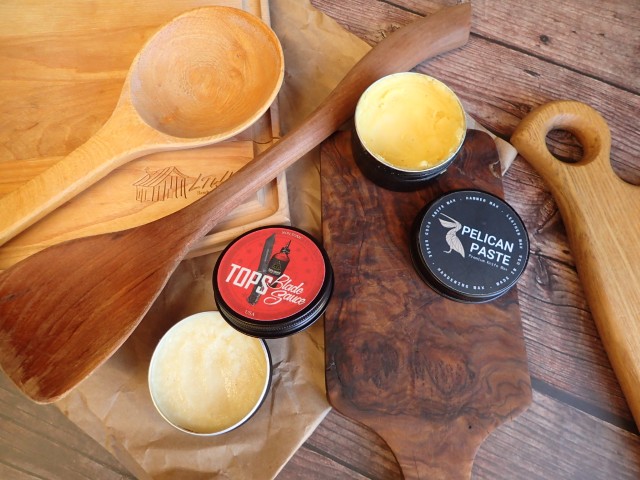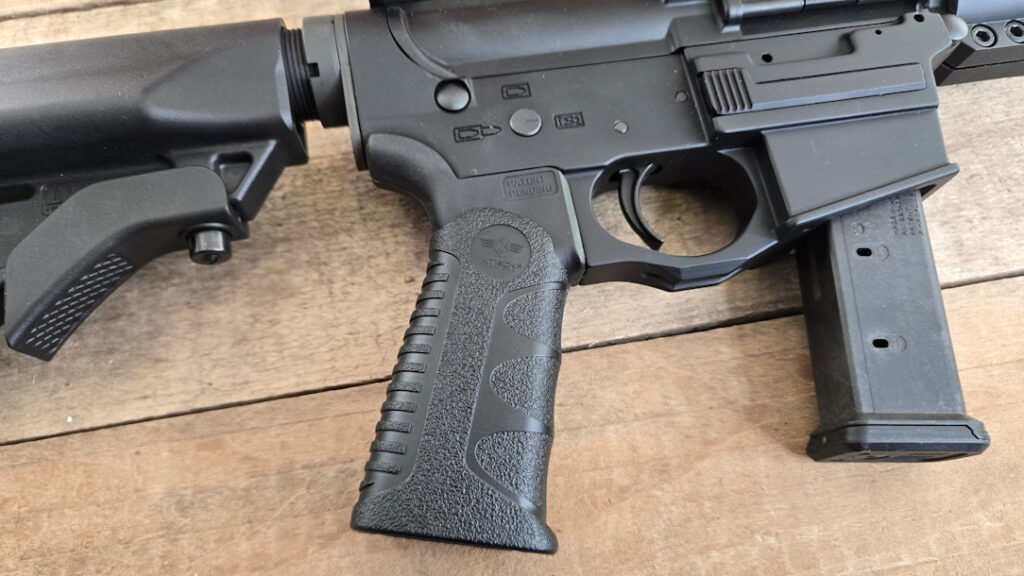Cutting boards, we all use them. They take a beating and still keep going. However, they need love and attention, too. Somebody told me a long time ago that if you treat your wood right, it will give you years of service. Here are a few maintenance tips to keep your cutting boards at the top of their game.
Proper Maintenance of Your Cutting Board
Wood vs Plastic
I use both. However, wood has soul and character, and, after much use, tells its story without words. Plastic looks the same, yet really shows off its knife scars. Plastic also needs replacing more often.
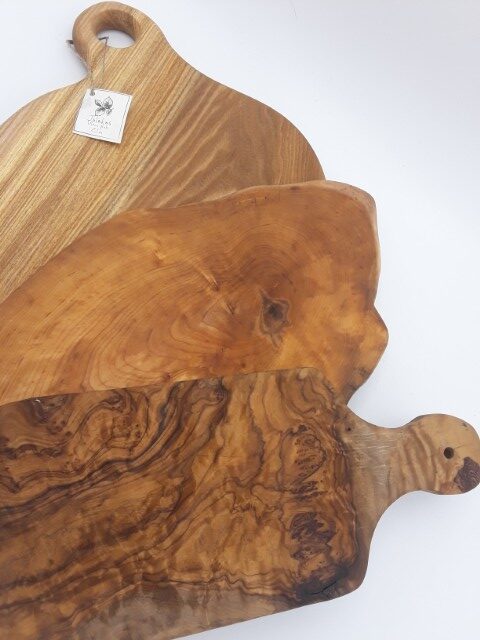
Advertisement — Continue Reading Below
Researchers study how bacteria survive on different cutting boards overnight. Wood tends to trap, absorb, and starve microbes. Plastic boards undergo lab tests to analyze bacteria hiding in knife scars.
Food safety experts compare cleaning methods, such as bleach and soap, to determine which removes germs effectively. Long-term studies examine knife dullness, stains, and odors, treating boards like contestants in a reality show. These findings highlight wood’s natural defenses and plastic’s ease of cleaning, helping cooks make informed choices.
Treat Your Wood Like Old Timers
Old timers treated their cutting boards like loyal workhorses. They scrubbed with salt, rubbed with vinegar, and rinsed with hot water. When boards looked thirsty, they massaged them with animal fat or mineral oil until the wood drank deep. Sunshine sometimes doubled as a sanitizer, though too much left boards cracked like desert clay.
Advertisement — Continue Reading Below
They avoided soaking, knowing water swells wood faster than gossip spreads in a small town. With steady care, those boards lasted decades, carrying knife scars like badges of honor.
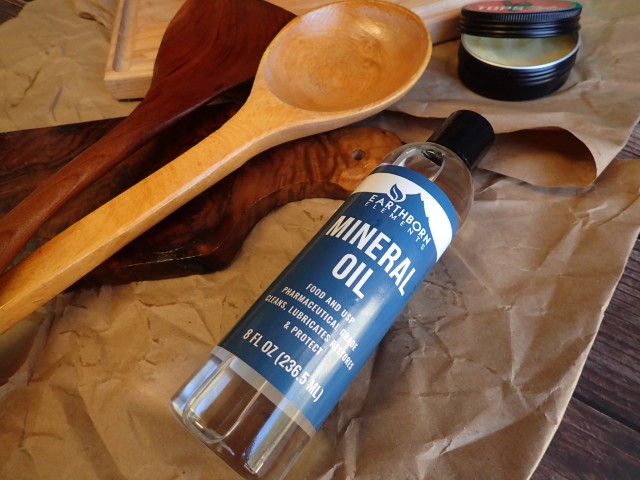
Pelican Paste for Your Wood
Pelican Paste is a food-safe hardening wax designed to guard wood and leather with the kind of reliability artisans trust. Makers use it on cutting boards, knife handles, and leather sheaths, rubbing it in until the surface feels armored yet natural. The wax blend seeps into pores, sealing them against moisture while leaving a finish that’s smooth, durable, and quietly elegant.
Advertisement — Continue Reading Below
On leather, it conditions deeply, keeping wallets, belts, and sheaths supple while adding a layer of grit-proof resilience. On wood, it highlights grain, prevents cracks, and shrugs off stains.
The process is simple—rub it in, buff it out, and let the material age with grace. Over time, the paste doesn’t just protect; it builds character, giving wood and leather the kind of patina that tells stories without words. It’s less a product and more a ritual, a way to keep tools and gear alive for the long haul. It also dons a sweet orange smell.
I used Pelican Paste Premium Knife Wax on leather sheaths previously. However, it works well on cherry, bamboo, and olive wood utensils. It’s a little gritty, and I should have taken the advice on the website to warm it first. Whatever. It works!
Advertisement — Continue Reading Below
MSRP: $20.00
Pelican Paste says you can use it on:
- High Carbon Knives
- Damascus Knives
- Wood Handles
- Cutting Boards
- Hammer Steel
- Hammer Handles
- Axe Handles
- Blacksmithing Tongs
- Anvils
- Leather wallets
- Leather Sheaths
- Skin
- Lips
- and much more!
Treat your wood right with Pelican Paste!
Advertisement — Continue Reading Below
Blade Sauce for Your Wood
Surprise, TOPS Knives pulled a fast one on us. Known for their array of hard-use knives for all occasions, they teamed up with Wicked Wax and cooked up something special!
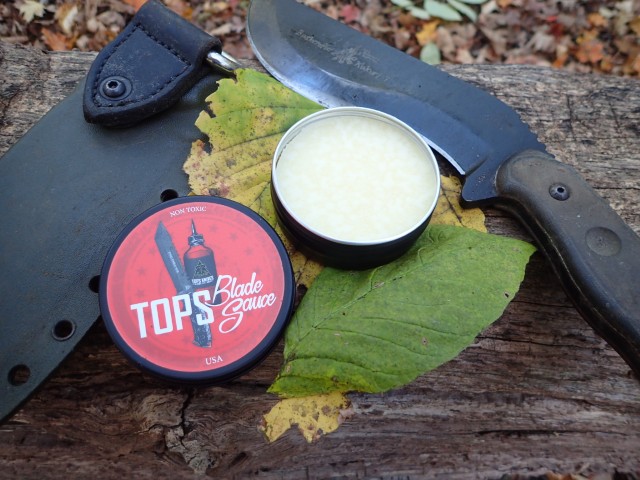
TOPS Blade Sauce is a food-safe wax blend crafted to protect knives, wood handles, and leather gear from the elements. Fred DiPrete (knife maker/Wicked Wax) developed it, and people who treat their tools like loyal companions trust it. The formula goes on smoothly. No sticky residue, no greasy aftermath—just a clean, sealed surface ready for action.
On wood, it locks out moisture, enhances grain, and prevents cracking like a seasoned carpenter’s handshake. It dives deep, conditioning leather sheaths and straps while shielding them from grit, grime, and the slow creep of dryness. It’s convenient for gear that sees both kitchen duty and backwoods abuse.
Advertisement — Continue Reading Below
Whether you’re slicing brisket or trekking through brush, Blade Sauce keeps your tools aging with grace. Makers love its simplicity: rub, buff, done. It’s not just maintenance—it’s ritual. A little dab turns raw materials into heirlooms, preserving the soul of wood and leather with every swipe.
MSRP: $15.00
I keep a TOPS Knives Kukuri stashed in the woods under a log with minimal cover. It gets all the rain, snow, and humidity that comes with the territory. I’ve used their rust inhibitor HP100 Knife Oil for three years. It does a good job. However, the sheath has a little bit of leather on the belt attachment, and the scales are Micarta. Both were dry. I took care of that with the Blade Sauce and can’t wait to see what the long-term results will be!
Advertisement — Continue Reading Below
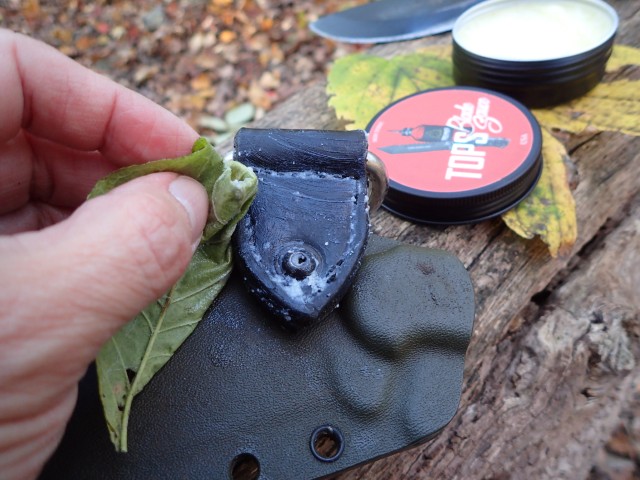
Finding: Treat Your Wood Right
Use something on your beloved wood. Whether it be utensils, leather, cutting boards, wooden or Micarta handle scales, just use something. Pelican Paste and Blade Sauce are the frontrunners in my kitchen and in the wild!
